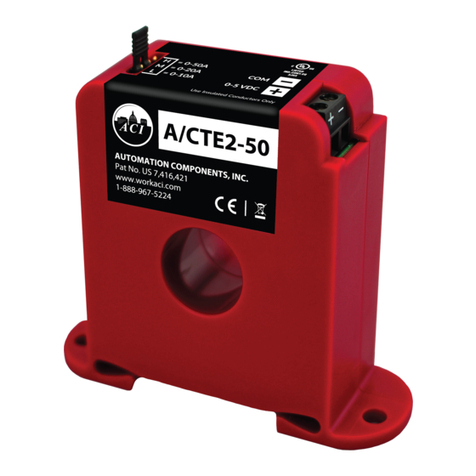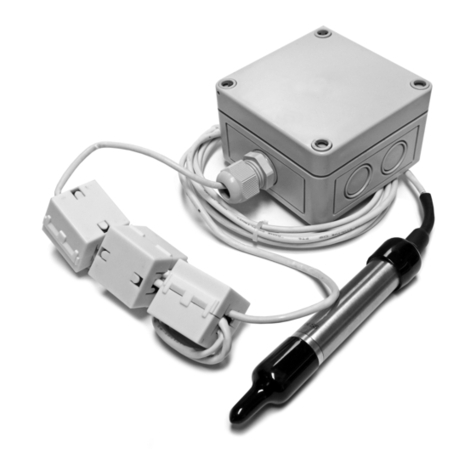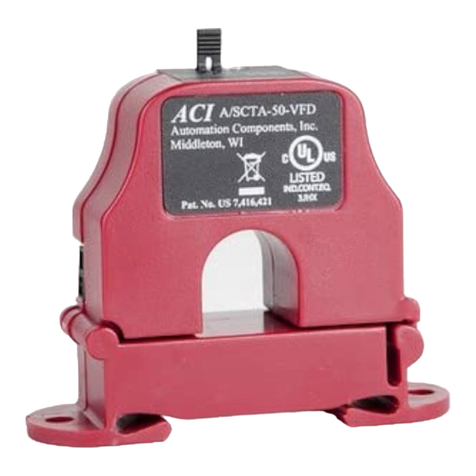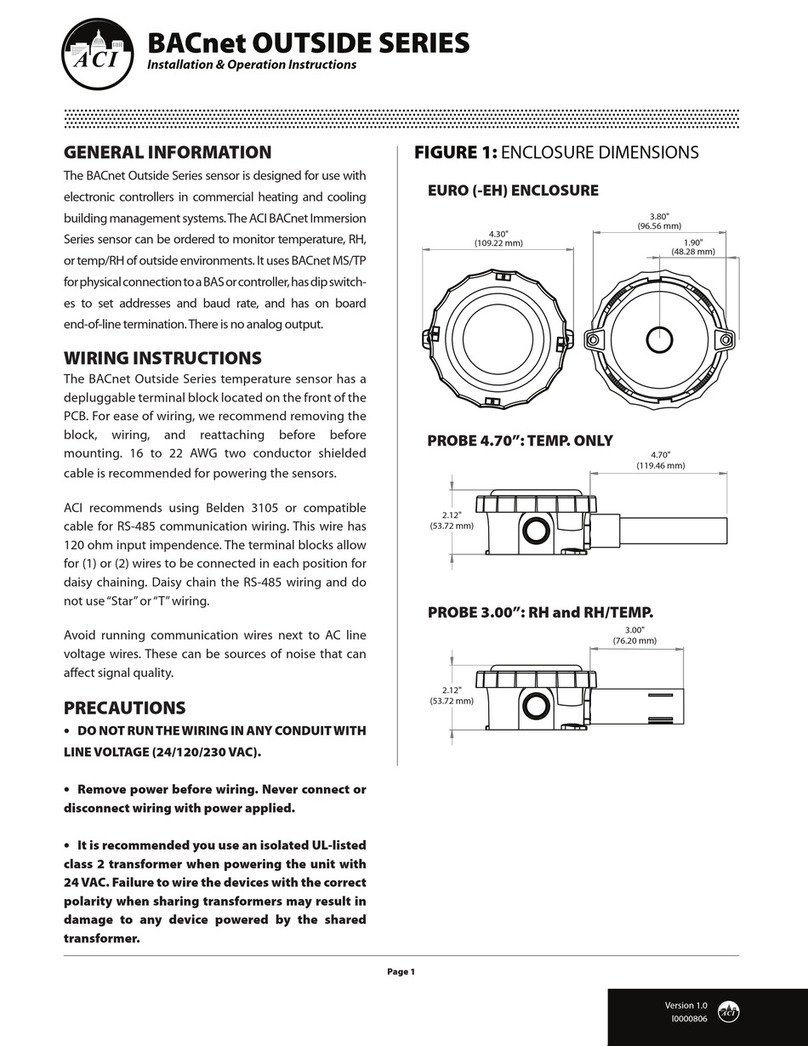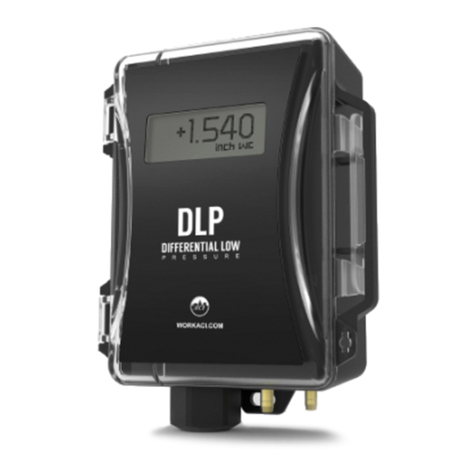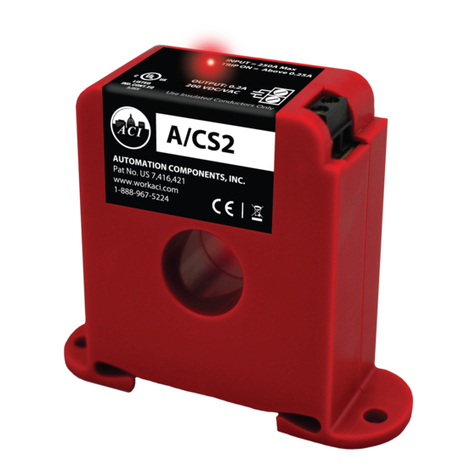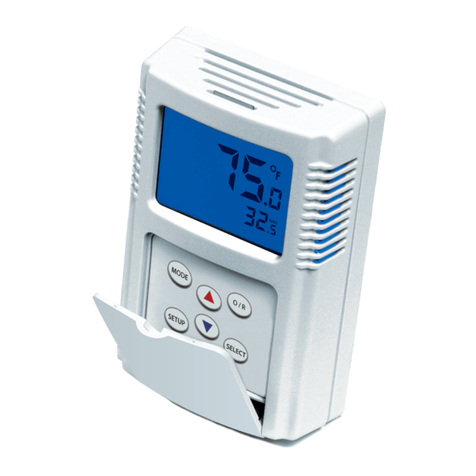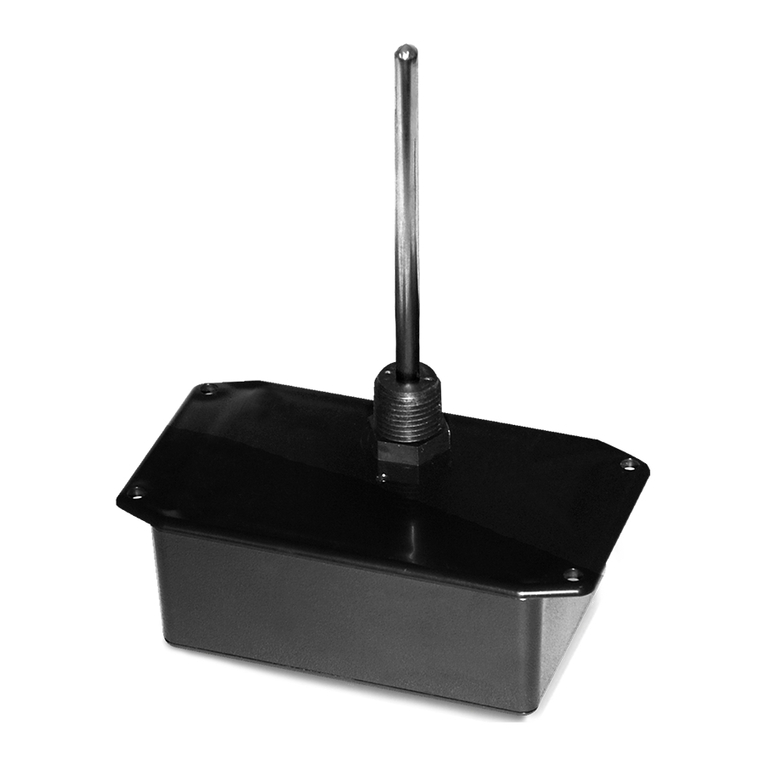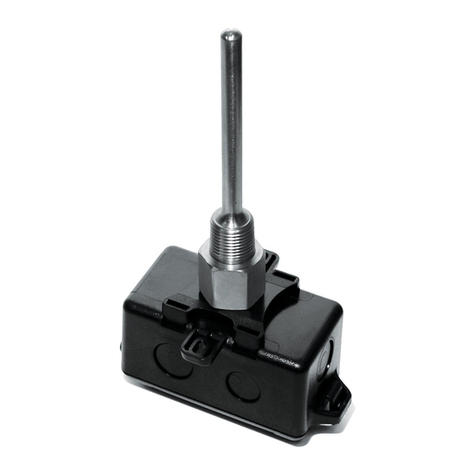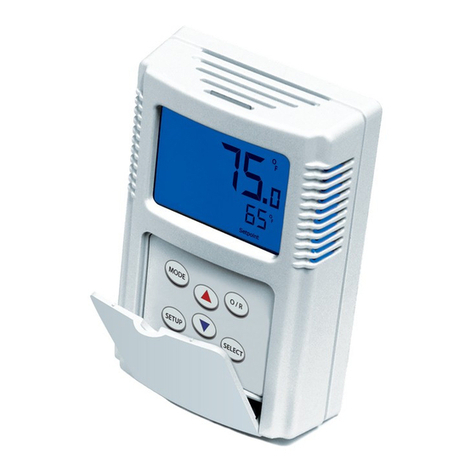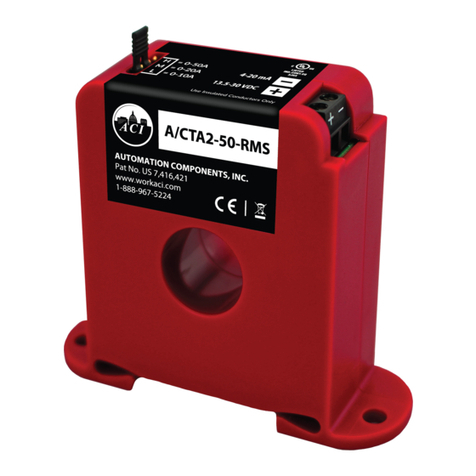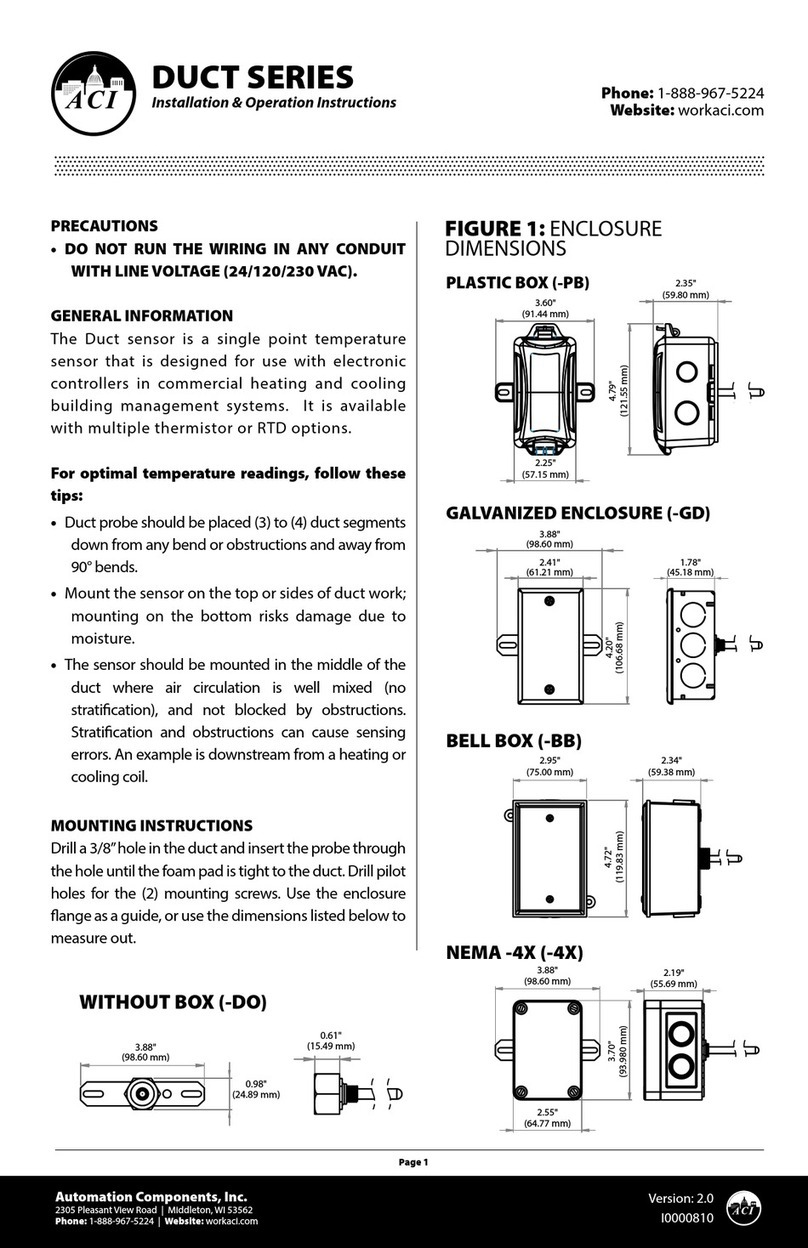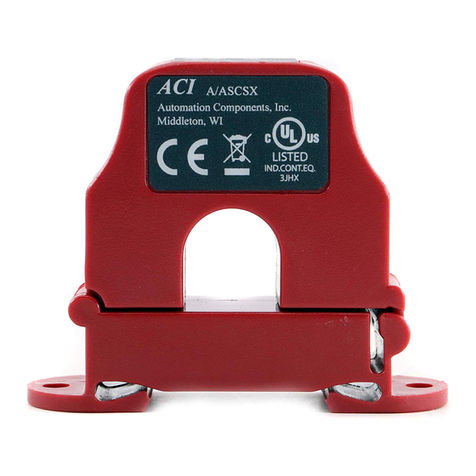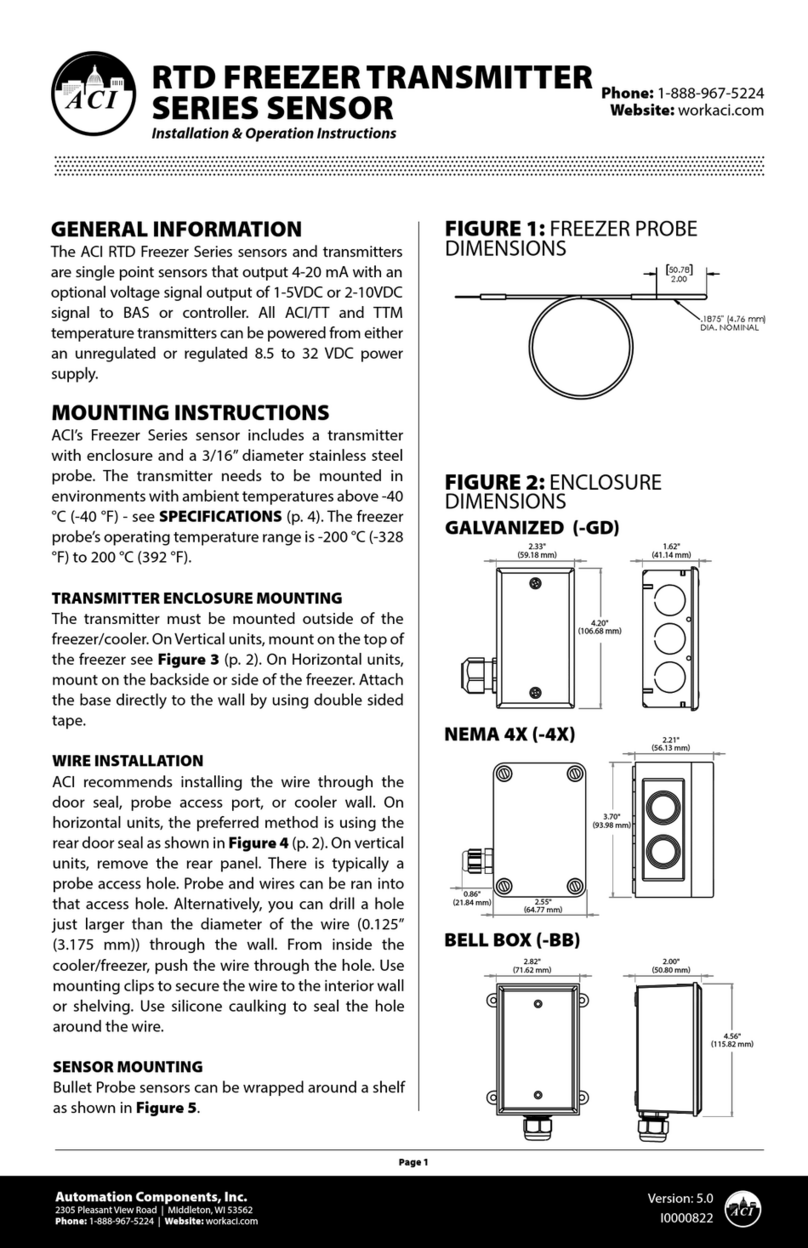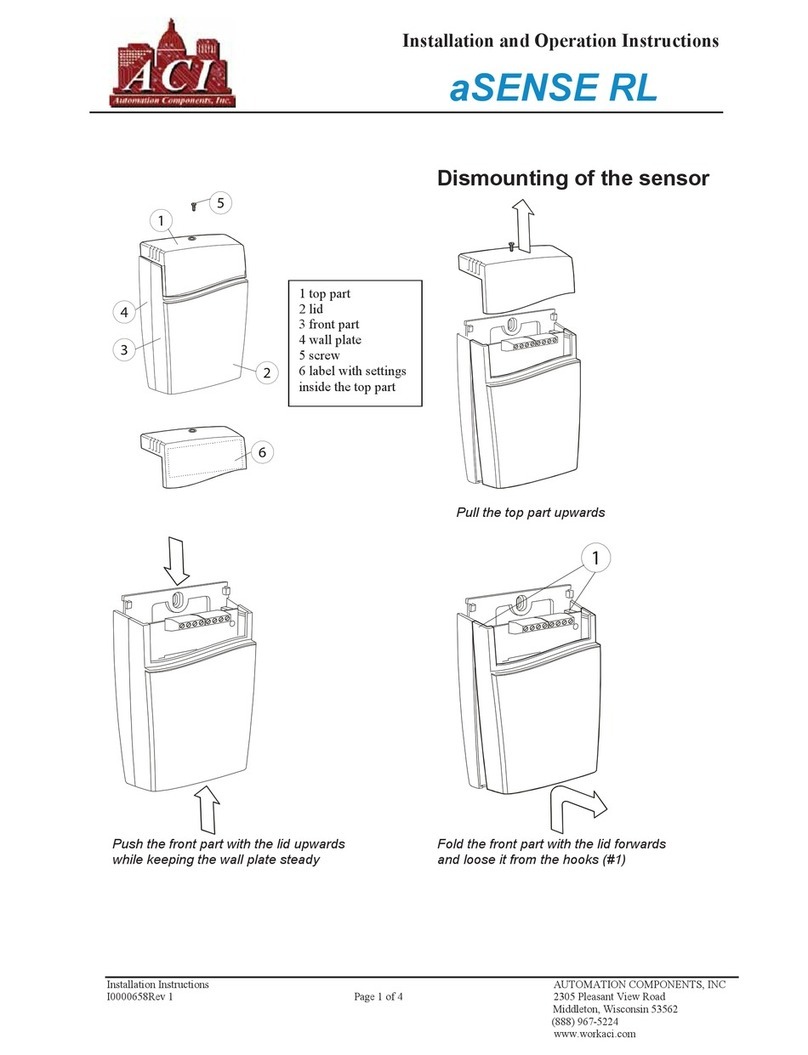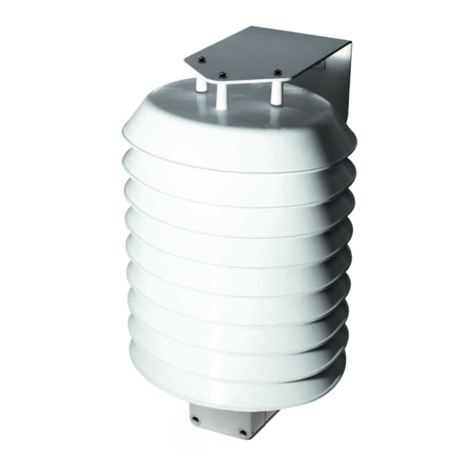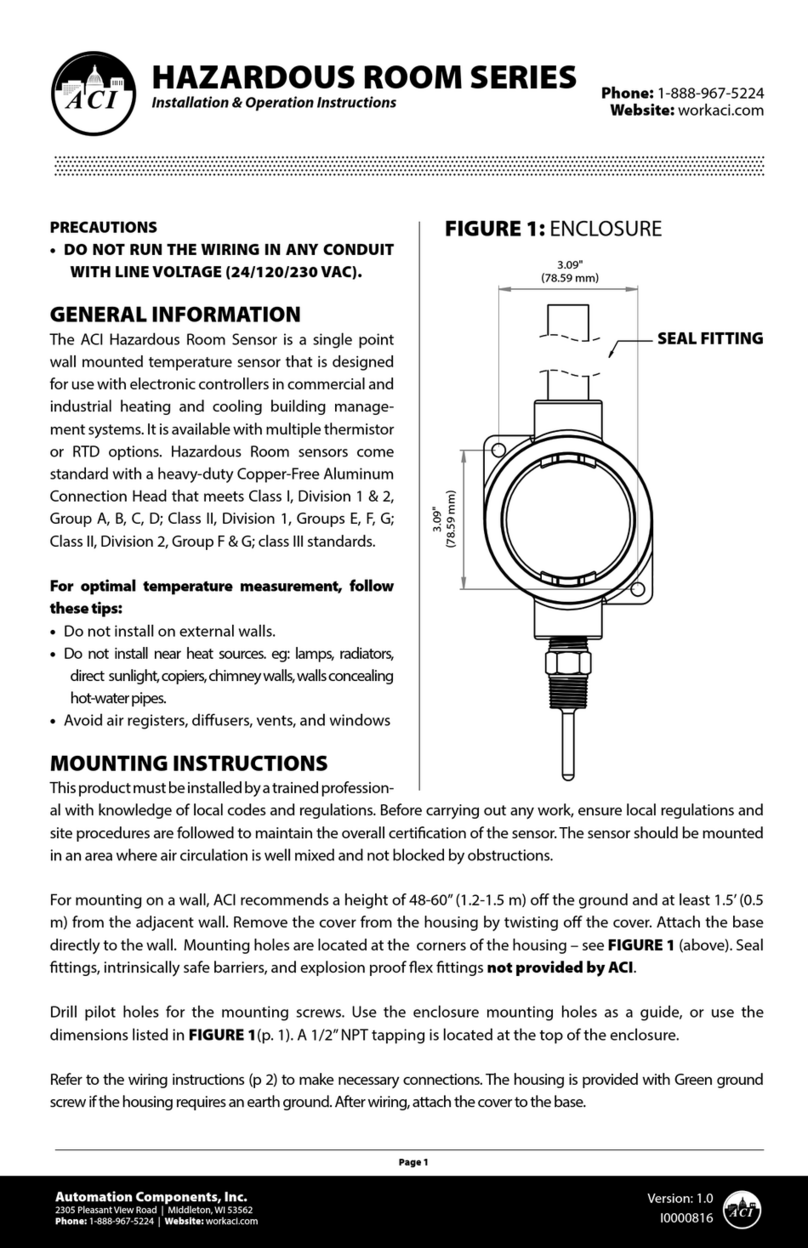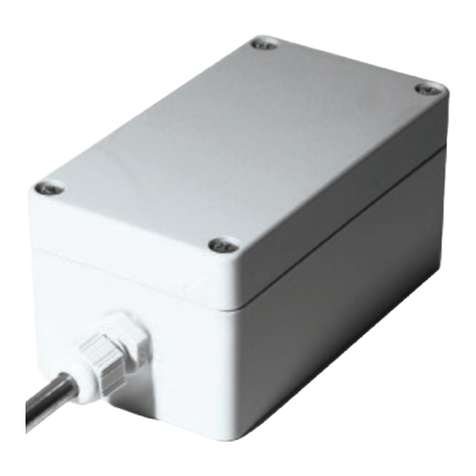
Automation Components, Inc.
2305 Pleasant View Road | Middleton, WI 53562
Phone: 1-888-967-5224 | Website: workaci.com
Page 1
Version: 7.0
I0000681
MOUNTING INSTRUCTIONS (Continued)
Drill a 3/8" (9.53 mm) hole in the duct. Gently uncoil the copper tubing and insert the averaging element
through the hole until the foam pad is tight to the duct. The sensor should then be strung in a criss-cross
pattern throughout the duct using the mounting clips provided - see FIGURE 3 (p. 3).
Use a pattern that covers the greatest surface area of the duct to ensure that there is no stratication. When
bending the copper tubing, be careful that you use a gradual bend and that you DO NOT kink the copper
tubing. Bends should be a minimum of 2” (50.8 mm). Each unit includes nylon wire ties and mounts for
mounting. Optional copper capillary (ACI Item #
130525)
or universal plastic mounting clips (ACI Item
#
128248
) can be ordered. Plastic mounting clips will help insulate the copper sensing element from the
metal duct. The capillary clips help avoid kinks when bending. When using Flexible averaging, do not cover
the heatshrink that is located throughout the sensor (sensing points).
Drill pilot holes for the (2) mounting screws. Use the enclosure flange as a guide, or use the
dimensions listed below to measure out. Now fasten and insert (2) screws #8 x 3/4" TEK (provided and
recommended) through the mounting holes in the flange and tighten until the unit is held firmly to
the duct.
FIGURE 1: DIMENSIONS
STANDARD
NEMA 4X
FLEXIBLE AVERAGING
TEMPERATURE SERIES
Installation & Operation Instructions
DT2650
Phone: 1-888-967-5224
Website: workaci.com
1.88"
(47.752 mm)
2.25"
(57.15 mm)
3.20"
(81.28 mm)
5.25" (133.35 mm)
5.78" (146.812 mm)
Ø 0.19" (4X)
(4.826 mm)
Battery Positive Terminal
Internal Link Button
DT2650A
Heyco Water
Tight Fitting
Standard Enclosure
2.56"
(65.024 mm)
4.53" (115.062 mm)
2.23"
(56.642 mm)
Battery Positive Terminal
Internal Link Button
SST2630AE
Altech Water
Tight Fitting
NEMA 4X Enclosure
GENERAL INFORMATION
The DT2650 is a battery operated wireless
exible averaging temperature sensor using
900 MHz spread spectrum technology to
monitor averaged temperature in ducts. The
exible cable is 24’ long and has nine (9)
sensing points evenly spaced throughout
the length of the cable for maximum
coverage. The DT2650 is easy to install with
no wire runs or conduit needed. The DT2650
will send the temperature wirelessly to the
RM2432D receiver that converts the wireless
signal to voltage input for use with a DDC
controller, or to a transceiver which will send
the data to a BAS using BACnet™, Modbus, or
Lonworks®protocol. Transmission distance
in a typical building is 200-300 feet
horizontal depending on the layout and
construction of the building, and one oor
above and one oor below the transceiver.
Sensor distance and reliability can be
increased with the addition of a RR2552B(s)
repeater.
Wireless sensors should be installed within
200 to 300 feet of the receiver. RR2552
signal repeaters can be installed as to
increase transmission distance between
sensors and receivers.
MOUNTING INSTRUCTIONS
To select the proper sensor location, rst install and power the receiver. To activate the sensor insert the
battery observing the polarity. ACI’s Wireless system does not require any additional wireless equipment to
determine the proper location of the sensors.
While the sensor is attempting to connect to the receiver the Data-Link LED will blink rapidly 8–10 times
every 10 seconds. Once a connection has been established, the Data-Link LED will blink once to indicate
the data transmission has been received successfully. The Data-Link LED will continue to blink once for
every data transmission. The data transmission rate is programmed into the sensor (normally 1 minute
intervals). To manually initiate a data transmission press the push button switch located by the negative
terminal of the battery.
For optimal temperature measurement, follow these tips:
•Mount coil horizontal for vertical stratication.
•Mount coil vertical for horizontal stratication.
•The sensor must be spread evenly over the full duct.
•The entire length of the sensor coil must be installed completely inside the duct. Do not have any part of
the sensor exposed to exterior air.
•When installing the sensor near air-handling units, place the sensor downstream from the fan discharge.
The stratied airstream will be more uniform across the duct cross-section. If the air is not well-mixed, the
reading may be inaccurate.
Locate and record the sensor ID numbers located on a label inside the unit prior to mounting.
The sensor has a Low Battery LED that will start to blink continuously when the battery voltage is low. A
low battery signal is also sent to the receiver for remote indication that the battery should be replaced. If
the battery is not replaced in approximately 2 months, the battery voltage will become so low that the Low
Battery and Data-Link LEDs will not blink. Replace the battery and the Data-Link LED will start blinking
while the sensor is re-establishing communications with the receiver.
Then attach the cover of the sensor by installing the four screws.
PRECAUTIONS
SENSORS, REPEATERS AND RECEIVERS SHOULD NOT BE INSTALLED IN THE FOLLOWING AREAS:
• INSIDE METAL ENCLOSURE / PANEL
• INSIDE OR IMMEDIATELY NEXT TO ELEVATOR SHAFT / ELEVATOR BANKS
• IN FRONT OF OR IMMEDIATELY NEXT TO LARGE TREES OR LARGE BODY OF WATER
TRANSMISSION DISTANCE AND PERFORMANCE WILL BE DRASTICALLY REDUCED.
CAUTION:
DO NOT USE THIS PRODUCT IN ANY SAFETY RELATED APPLICATIONS WHERE HUMAN LIFE
MAY BE AFFECTED.

